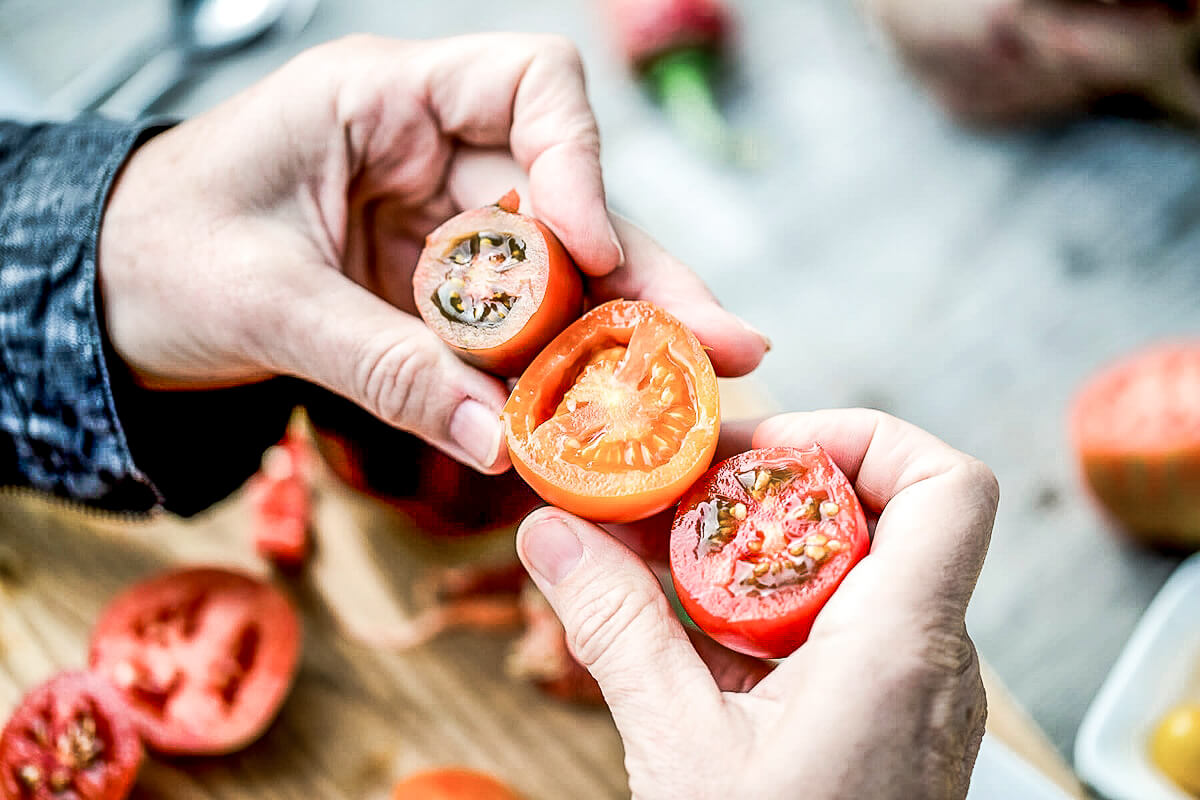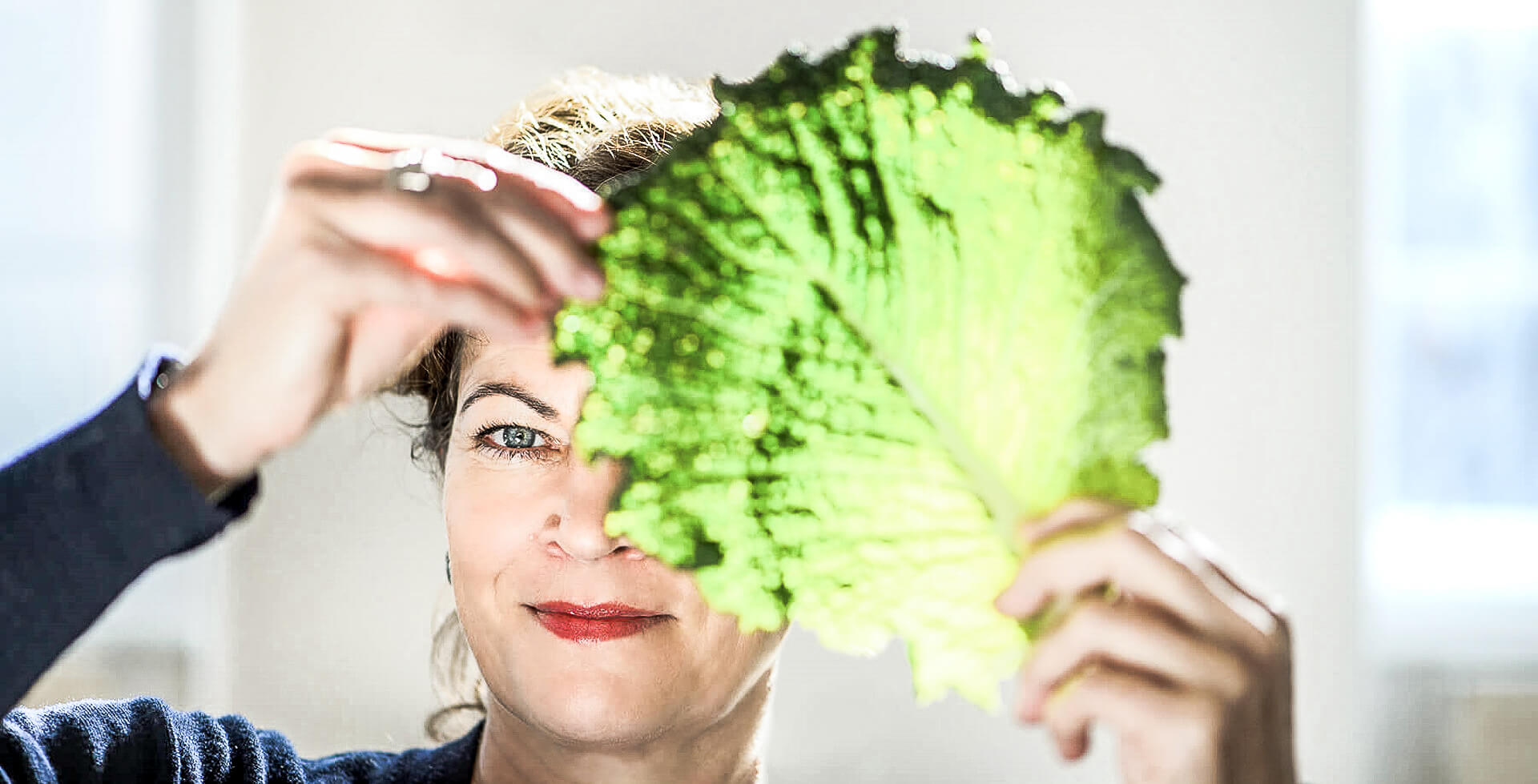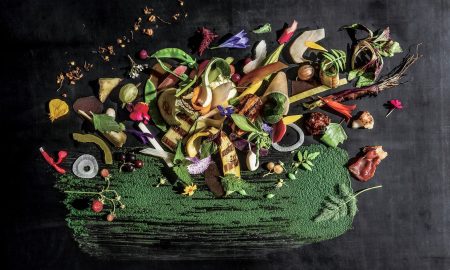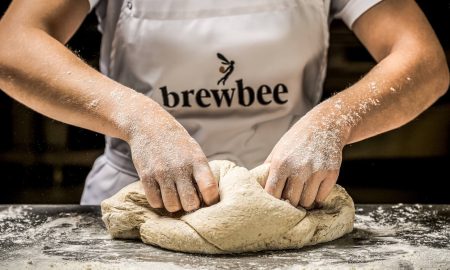“We have been facing multiple crises for several years. These are always times when innovation is not actually happening. Instead, innovation that has already been thought of and prepared is being implemented,” explains renowned nutritionist Hanni Rützler. In other words, in 2025 there will be no radical innovations or changes to the food trends in 2024 or 2023. But there will be shifts, synergies and interconnected effects. These effects are no less exciting for the entire food service industry. In the current Food Report, the nutritionist therefore focuses on how the most relevant food trends of the past years support each other. She also illustrates the enormous potential this affords, which can already be used or will be able to be used in the future. This potential becomes clearly visible through the many examples she provides from restaurants, hotels or the entire gastronomy sector, agriculture or even commerce.
Allowing change – implementing food trends in 2025
And this is precisely the approach that sets Hanni Rützler apart. With her Food Report, she has been presenting solutions to the challenges of our time every year since 2014. Because the world we live in is highly complex. As speed increases thanks to new digital technologies, security and stability decrease. As a result, the ability to embrace and adapt to change is becoming increasingly important for restaurants and businesses in general, rather than sticking rigidly to the past and the status quo. “I think we have talked a lot about problems in recent years and analyzed them extensively. Now it’s time to get involved and implement things,” explains Hanni Rützler. In the latest Food Report, she therefore groups the current food trends for 2025 into three major topic areas showing the biggest leaps at the moment.

Image: Nicole Heiling
1. Food trend cluster: Health, sustainability and climate protection
The first major food trend cluster covers the topics of health, sustainability and climate protection. Each of them has been discussed and analyzed extensively in recent years. For a food trend researcher, the combined effects surrounding the topic of meat of the future are therefore almost a classic. This is not just about replacing meat with plant-based protein innovations – at least not yet . It is rather also about the “counter-trend”, which is a new appreciation for meat.
Regardless of the individual viewpoint, the trend shows that meat production needs to evolve. The old paradigm of “faster, cheaper and more” has been obsolete for a long time. “The question is now where meat production makes sense and in which geographical and climatic zones are less suitable. This realignment of agriculture is a painful and intensive process, but we are now seeing some movement,” says Hanni Rützler. This development is particularly evident in the changing menus and concepts of restaurants embracing the vegetarian and vegan food trend.
What happens next with plant-based food?
Meat is being reimagined. This includes the plant-based food trend. Despite some setbacks from large companies such as Beyond Meat or Impossible Foods, this trend will continue to accompany us for a very long time to come. In general terms, the technologies for alternative proteins or plant-based substitutes are becoming better and better. The selection of raw products is becoming more diverse and more sustainable. And in terms of taste, consistency and sensory senses, people are increasingly leaning towards the originals of meat, seafood and milk. This applies in particular to elaborately produced brand products, which are correspondingly more expensive for the most part.
In the Food Report 2025, the trend researcher criticizes the fact that retailers are now entering the market with cheaper private labels. But those mostly don’t impress in terms of taste, appearance and smell, and often also contain a lot of additives. “In my opinion, this is happening too quickly and is damaging the qualitative development,” she explains. This means that the market is considered saturated sooner than expected, which in turn can slow down further innovations and reduce product diversity. This could lead to qualities that are not yet optimal. There is also a risk that they will not only appeal less to customers, but even deter them.
The future of meat
There is competition in the field of high-quality meat substitutes. There is also competition in the development of Lab grown or Cultured Meat. This is already approved in the USA and Singapore. And itcould also be introduced in the EU, Switzerland and the UK in the future. While consumer skepticism seems to be crumbling, companies still face many challenges in some countries. These challenges include economic costs or political resistance. Furthermore, it has not yet been clarified to what extent and when this type of production offers climate advantages due to the high energy consumption.
In the medium term, the future therefore probably belongs to plant-based protein products (including mushrooms and algae). They are perceived as stand-alone foods and thus expand the product range instead of merely being protein substitutes for meat, seafood and milk.

Image: Nicole Heiling
2. Food trend cluster: Regionality and globalization
The second major trend cluster in the Food Report 2025 comprises two topics that appear to be contradictory at first glance: regionality and globalization. The latter is actually a megatrend. “This has been increasing for decades. This is quite unusual, and people have been wondering for some time when globalization will slow down,” says Hanni Rützler. And adds that there would be no food safety without globalization. However, it does now seems to be slowing down. Consumers no longer only want to try all international flavors, products and dishes. They are also increasingly focusing on the quality they can expect from food and where the food should come from. The most powerful drivers behind this development are war on the one hand and climate change on the other.
Opportunities for the gastronomy industry
Whether in towns or rural areas, many restaurant owners, chefs and hosts nowadays take the time to build up a network of local producers and make this transparent for everyone in the menu. “It’s an opportunity to differentiate yourself from other, more price-oriented, culinary offerings and develop your own profile.”
According to the expert, guests appreciate this and are willing to spend more money on quality and sustainably produced food despite inflation. Hanni Rützler puts this down to the fact that more people are cooking at home, which has increased expectations. “The guest doesn’t go out just to eat to get full as quickly as possible. They want to be inspired, feel good, experience something. It doesn’t always have to be the most expensive meat – a plant-based dish, a culinary side dish or the use of unique herbs also have their charm and can spark joy.” This poses problems for some kitchens. At the same time, however, this also opens up enormous opportunities for the gastronomy sector. And regardless of whether de-globalization or renewed re-globalization occurs in the future, ecological sustainability in professional kitchens and transparency within the supply chain will remain in place for the long term.
3. Food trend cluster: Food production and food waste
“Waste is an invention of the industrial era,” is a quote from Swiss Professor Tilo Hühn from the Zurich University of Applied Sciences (ZHAW) used in the Food Report 2025. And in fact, food used to be appreciated in a completely different way than it is today. At the time, this was due to poverty. Today, food trends such as Zero Waste or Circular Food are focusing on encouraging an environmentally friendly approach to eating and cooking, but also on correcting the enormous amount of food waste and tons of packaging material thrown away in recent decades.
Gastronomy as a pioneer
Today, there are even complete zero-waste restaurants that make this trend the heart of their concept. Hanni Rützler explains: “We are re-identifying resources, so to speak, and this is also, but not exclusively, about saving and efficiency. Because the topic of food waste can also provide a culinary boost the kitchen, and there’s a lot going on right now.” Waste is no longer seen as waste, but as a starting product for something new. Sustainable food trends and concepts such nose-to-tail and leaf-to-root are having a big impact, especially in the higher-level gastronomy sector.
However, the motivation behind this is not to avoid waste. Instead, it is to use all ingredients – whether potato peel, fish skin or left-over bread – in dishes or at least preserve them using traditional or modern cooking methods. Hanni Rützler believes that fermentation offers great potential for the future. Likewise, restaurateurs who think about food from the start and implement circular food concepts can score points with their guests in particular.
Eco-friendly cooking and eating is in demand and there is a reason why gastronomy is regarded as a pioneer here. Rützler also reaffirms this: “Chefs are characterized by the fact that they think very consciously about what they cook and cook with. Above all, know-how, craftsmanship and creativity are needed to stand out from the crowd. After all, anyone can use a small part and throw away the rest.”

Image: David Payr
Trends are not short-lived
Hanni Rützler’s approach to work differs from the many other trend and nutrition studies, from the agencies or influencers who broadcast their opinions to the world, especially thanks to social media. The trend researcher does not analyze short-lived phenomena or hypes that will be forgotten by tomorrow. Rather, she recognizes, names, evaluates and interprets the most important developments that the gastronomy and the entire food industry must adapt to and prepare for. Food trends are a special tool for this. Since they visualize the future, even if they are not yet perceived by the public. It also means: Because they offer restaurants, hotels and other companies in the foodservice and gastronomy industry the opportunity to actively shape food culture instead of being overwhelmed by change.
New food trends – AI can’t do it yet
The native Austrian has now been examining the topic of nutrition from a wide range of perspectives for more than 20 years. And has continued to do so in the latest Food Report. In doing so, she draws not only on her in-depth expertise. This expertise includes studies in nutritional sciences, psychology and sociology and food technology. She also relies on years of experience and an extremely strong instinct for trends that have yet to emerge.
Digital technologies and artificial intelligence can’t compete with her here. At least not yet. Hanni Rützler says: “I personally think AI is really exciting because it gives us access to millions of data sources. It makes it very easy to measure and understand concepts here and now. You can see which products are on the market worldwide, where they are. But you can not see how they will develop and what this means for the market. There is certainly still potential for further development here too, but we aren’t there yet.”
Artificial intelligence in the gastronomy industry is generally a topic that unleashes potential but also carries risks. Here are two exciting articles about AI in the food service industry:
- Artificial intelligence: Potential and challenges in the professional kitchen
- Is the might of artificial intelligence also bringing a revolution to the hospitality industry?

















